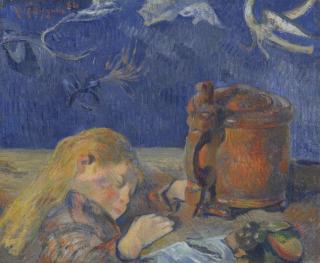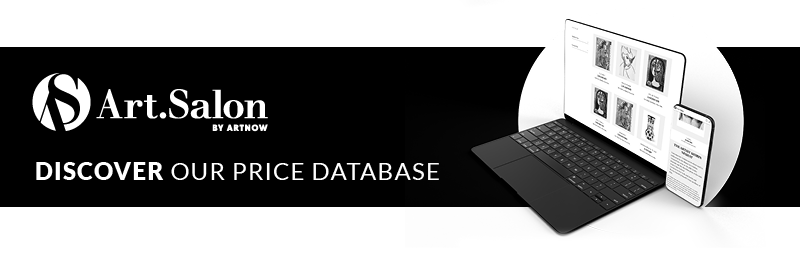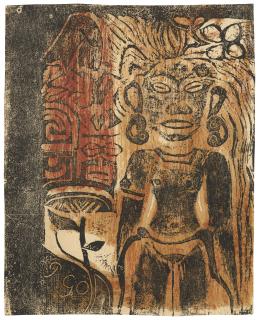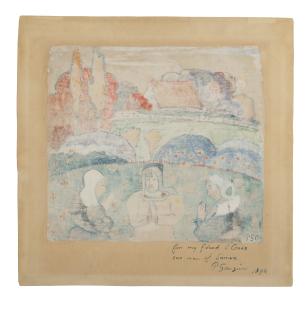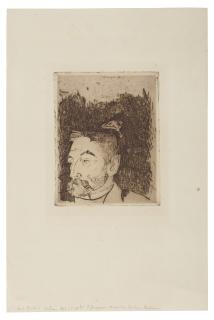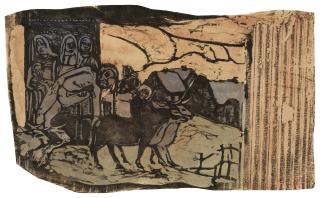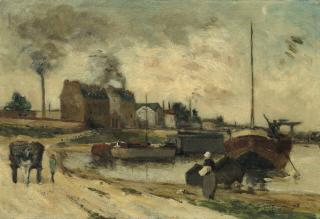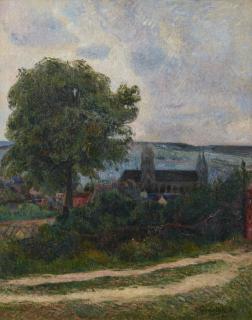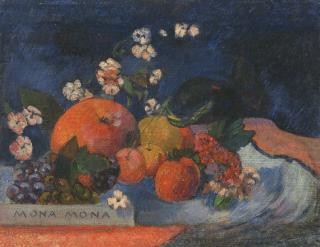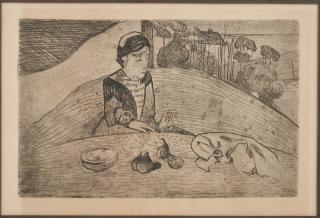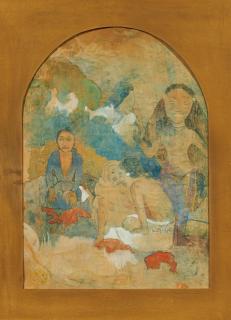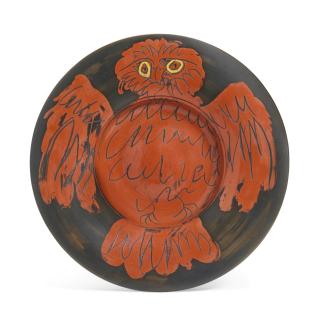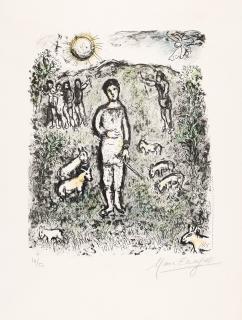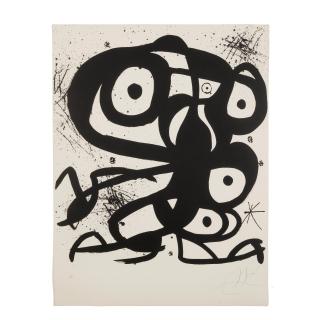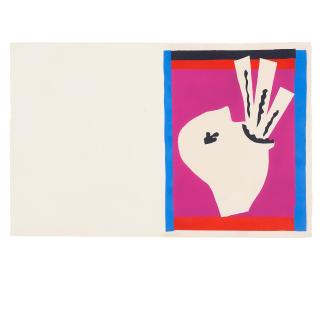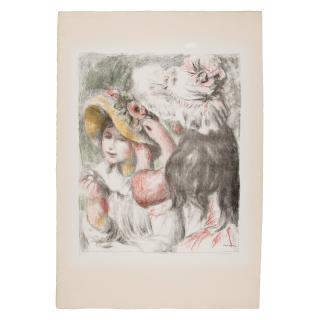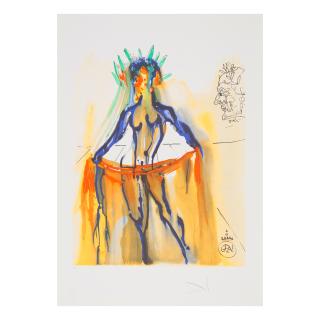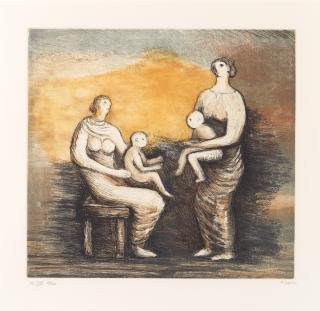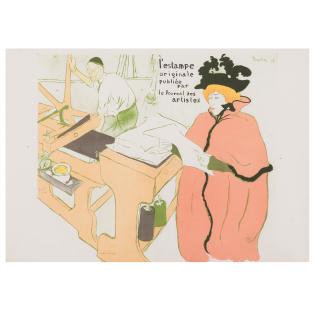Paul Gauguin 1848 - 1903
The artist Paul Gauguin
- Was an important post-impressionist painter and pioneer of modernism.
- He is known for his Tahitian motifs and planar imagery.
- His œuvre must be critically examined from a postcolonial point of view.
Paul Gauguin's enthusiasm for foreign cultures became apparent early on. Born in Paris in 1848, the artist spent a few years of his childhood in Lima, Peru, and joined the navy at the age of 17, reaching remote places like South America and India. In 1872, Gauguin began a career as a stockbroker in Paris and earned good money. After a crash at the stock market, he hung up his job and put all his eggs in one basket: art.
Gauguin travelled extensively in France and surrounded himself with other artists in Pont-Aven, Brittany. His Impressionist landscape paintings were much appreciated by his fellow artists, but they were rarely bought by collectors. In Arles he visited Vincent van Gogh, their meeting ended with the myth about van Gogh's cut-off ear. A year earlier, in 1987, Gauguin made a trip to Panama and the Caribbean island of Martinique together with his friend, the artist Charles Laval. In 1891, Gauguin finally came to Tahiti for the first time, where his most famous works were created. He spent around ten years of his life there. The impetus for his travels was Gauguin's search for total artistic freedom. His western idea of a stronger spirituality through a pre-industrial and untouched way of life is today called primitivism. Gauguin's works seem lively and calm at the same time. With bright colours he painted the natives in their everyday life, surrounded by tropical landscapes.
His very young lovers are often depicted. With his planar application of colour and exotic motifs, Gauguin broke away from Impressionism. His œuvre not only influenced Symbolism and the »Nabis« group of artists, but was also groundbreaking for Synthetism and Expressionism. In addition to his paintings, Gauguin also created ceramics and a wide range of prints.
The paradisiacal character of Gauguin's paintings corresponded more to his dream imagination than to reality: Tahiti, too, was a French colony whose indigenous traditions had been displaced by Western influences. Gauguin, who often offended his fellow men throughout his life, resisted this. Nevertheless, he combined European elements with South Sea-motifs in some of his works – most strikingly in the testament-like painting Where do we come from? What are we? Where are we going? – to exercise spiritual purity, in this case of the Christian faith.
From today's perspective, Gauguin's works exemplify exoticism and colonial art. His fascination with the »unspoiltness« of people simultaneously implies their backwardness. Nevertheless, Gauguin's works are highly traded on the art market. Paintings by him are represented in many collections and exhibitions, increasingly against the background of a postcolonial reconsideration.
Der Künstler Paul Gauguin
- War ein bedeutender post-impressionistischer Maler und Wegweiser der Moderne.
- Ist bekannt für seine tahitische Motivik und flächige Bildsprache.
- Sein Œuvre muss unter postkolonialen Gesichtspunkten kritisch betrachtet werden.
Paul Gauguins Begeisterung für fremde Kulturen deutete sich schon früh an. Der 1848 in Paris geborene Künstler verbrachte ein paar Jahre seiner Kindheit im peruanischen Lima, als 17-Jähriger trat er der Marine bei und erreichte so unter anderem Südamerika und Indien. 1872 begann Gauguin in Paris eine Karriere als Börsenmakler und verdiente gutes Geld. Nach einem Börsencrash hing er seinen Job an den Nagel und setzte alles auf eine Karte: die Kunst.
Gauguin reiste viel durch Frankreich und umgab sich im bretonischen Pont-Aven mit anderen Künstlern. Seine impressionistischen Landschaftsmalereien fanden viel Anerkennung unter seinen Künstlerkollegen, doch von Sammlern wurden sie nur selten gekauft. In Arles besuchte er Vincent van Gogh, ihr Treffen endete mit dem Mythos um van Goghs abgeschnittenes Ohr. Mit seinem Freund, dem Künstler Charles Laval, unternahm Gauguin ein Jahr zuvor, 1987, eine Reise nach Panama und auf die karibische Insel Martinique. 1891 kam Gauguin schließlich zum ersten Mal nach Tahiti, wo seine bekanntesten Werke entstanden. Rund zehn Jahre seines Lebens verbrachte er dort. Antrieb seiner Reisen war Gauguins Suche nach der totalen künstlerischen Freiheit. Seine westliche Vorstellung einer stärkeren Spiritualität durch eine vorindustrielle und unberührte Lebensform wird heute als Primitivismus bezeichnet. Gauguins Werke wirken lebendig und ruhig zugleich. Mit leuchtenden Farben malte er die Einheimischen in ihrem Alltag, umgeben von tropischen Landschaften.
Häufig abgebildet sind seine sehr jungen Geliebten. Mit einem flächigen Farbauftrag und den exotischen Motiven löste sich Gauguin vom Impressionismus. Sein Œuvre beeinflusste nicht nur den Symbolismus und die Künstlergruppe »Nabis«, sondern war auch wegweisend für den Synthetismus und Expressionismus. Neben seinen Malereien schuf Gauguin auch Keramiken und ein breites druckgrafisches Werk.
Der paradiesische Charakter von Gauguins Bildern entsprach vielmehr seiner Traumvorstellung statt der Realität: Auch Tahiti war eine französische Kolonie, deren einheimische Traditionen durch westliche Einflüsse verdrängt wurden. Gauguin, der zeitlebens häufig bei seinen Mitmenschen aneckte, sträubte sich dagegen. Dennoch kombinierte er in manchen seiner Arbeiten europäische Elemente mit der Südsee-Motivik – am auffälligsten in dem testamentarisch anmutenden Bild Woher kommen wir? Was sind wir? Wohin gehen wir? –, um die spirituelle Reinheit, in dem Fall des christlichen Glaubens, zu exerzieren.
Aus heutiger Sicht stehen Gauguins Werke beispielhaft für den Exotismus und die koloniale Kunst. Seine Faszination für die »Unverdorbenheit« der Menschen impliziert gleichzeitig ihre Rückständigkeit. Nichtsdestotrotz werden Gauguins Werke auf dem Kunstmarkt hoch gehandelt. In vielen Sammlungen und Ausstellungen sind Bilder von ihm vertreten, immer häufiger vor dem Hintergrund einer postkolonialen Neubetrachtung.
Paul Gauguin in News and Exhibitions
»Gauguin in the World«
In a major exhibition with over 150 exhibits, the Museum of Fine Arts, Houston presents new perspectives on the life, work and artistic influences of Paul Gauguin: Gauguin in the World opens on November 3.
Paul Gauguin in dialogue with postcolonial debates
From March to July 2022, the Alte Nationalgalerie in Berlin presents works by Paul Gauguin that were created on the South Sea island of Tahiti. Paul Gauguin - Why Are You Angry? examines the artist's work in the context of current postcolonial debates and juxtaposes the works with the positions of contemporary artists.
Paul Gauguin in News and Exhibitions
»Gauguin in the World«
In einer großen Ausstellung mit über 150 Exponaten präsentiert das Museum of Fine Arts, Houston neue Perspektiven auf Leben, Werk und künstlerische Einflüsse Paul Gauguins: Gauguin in the World eröffnet am 03. November.
Paul Gauguin im Dialog mit postkolonialen Debatten
Von März bis Juli 2022 präsentiert die Alte Nationalgalerie in Berlin Werke von Paul Gauguin, die auf der Südseeinsel Tahiti entstanden sind. Paul Gauguin – Why Are You Angry? betrachtet des Künstlers Arbeiten vor dem Hintergrund aktueller postkolonialer Debatten und stellt die Werke Positionen zeitgenössischer Künstlerinnen und Künstler gegenüber.

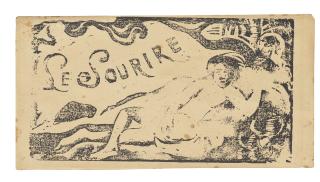

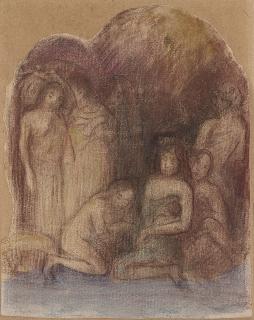
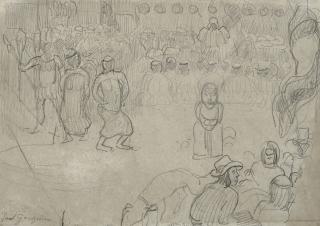
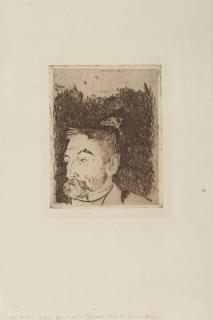
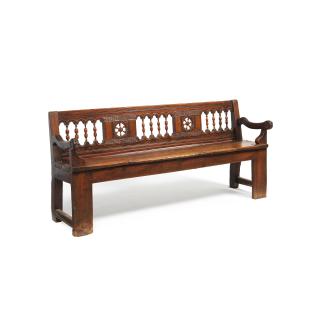
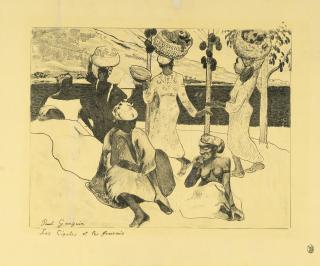

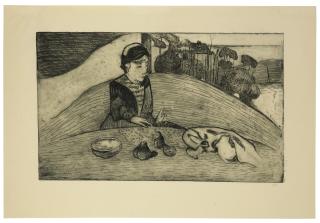

![Paul Gauguin - Noa Noa, voyage à Tahiti. [Munich, R. Piper, 1926]](/images/paul-gauguin_noa-noa-voyage-a-tahiti-munich-r-piper-1926_AID1174029_320x320.jpg)
